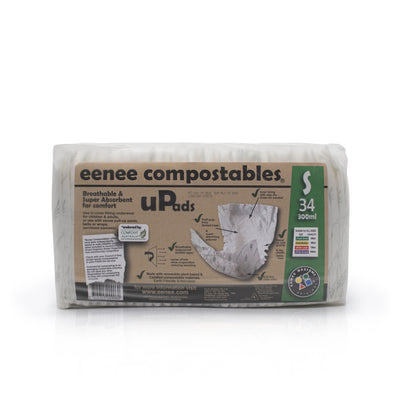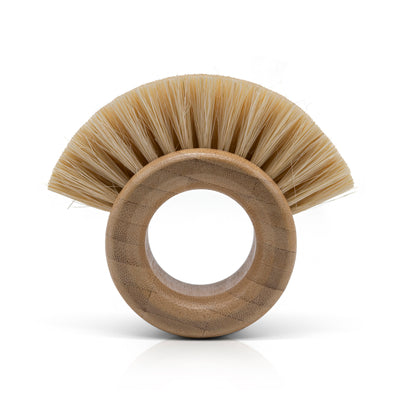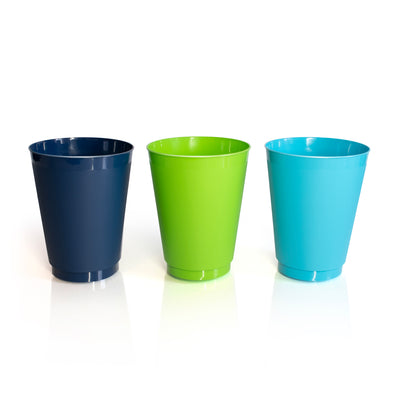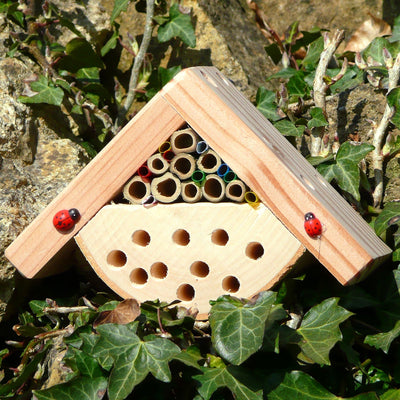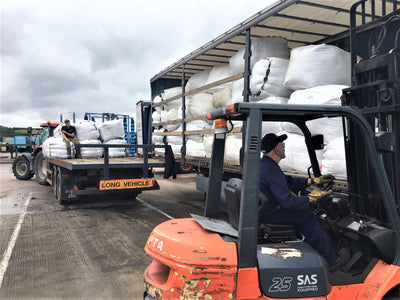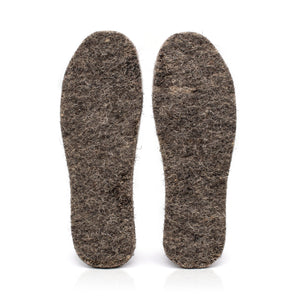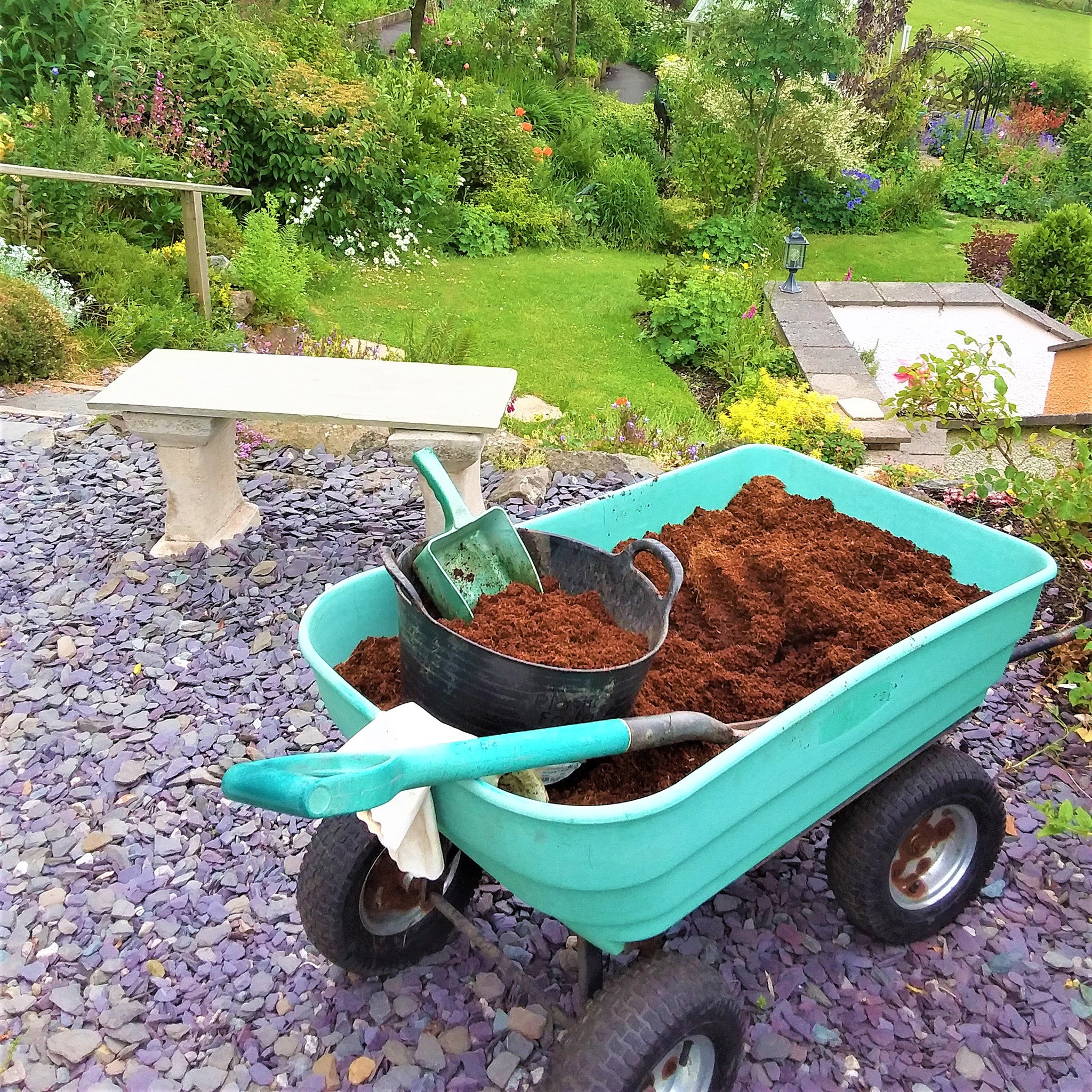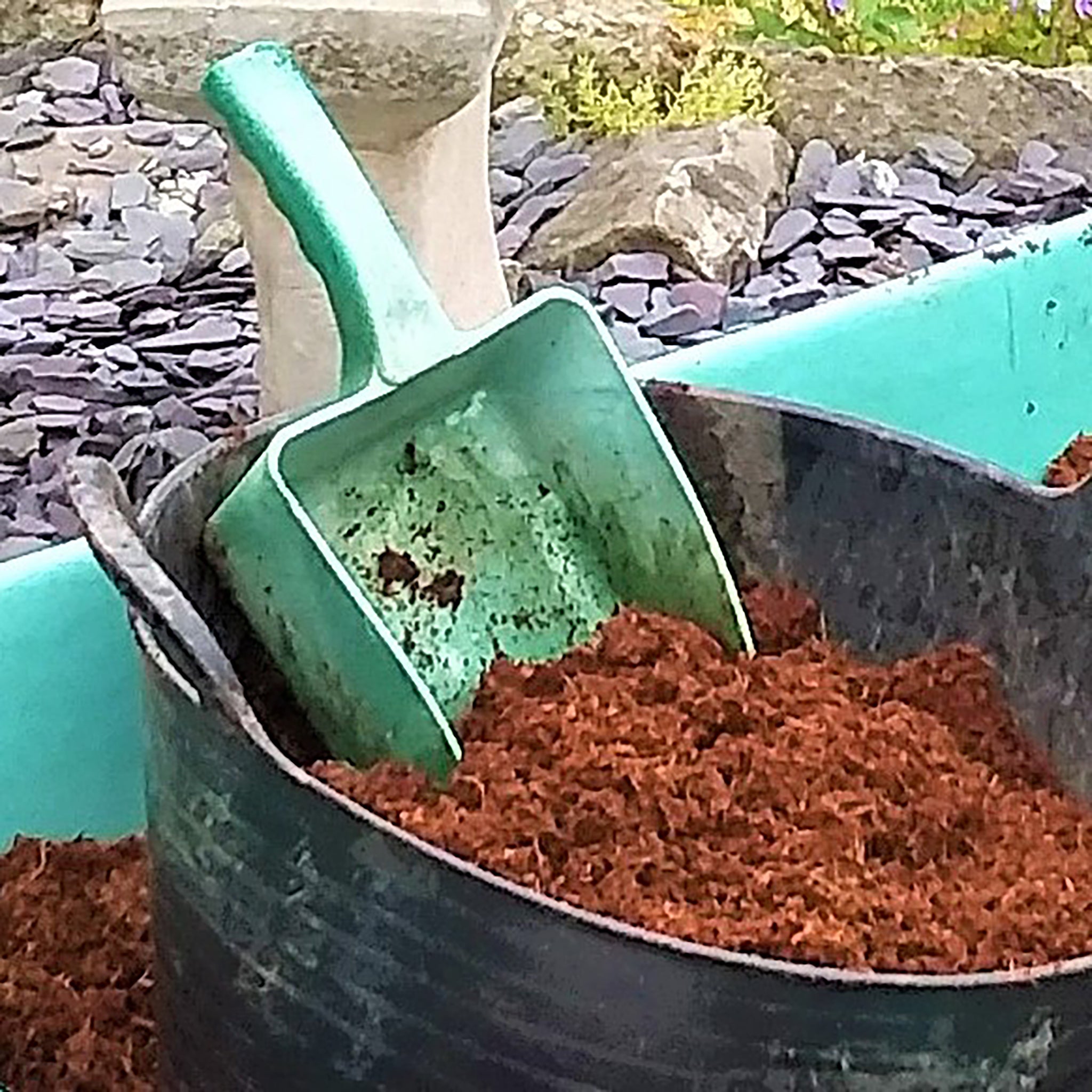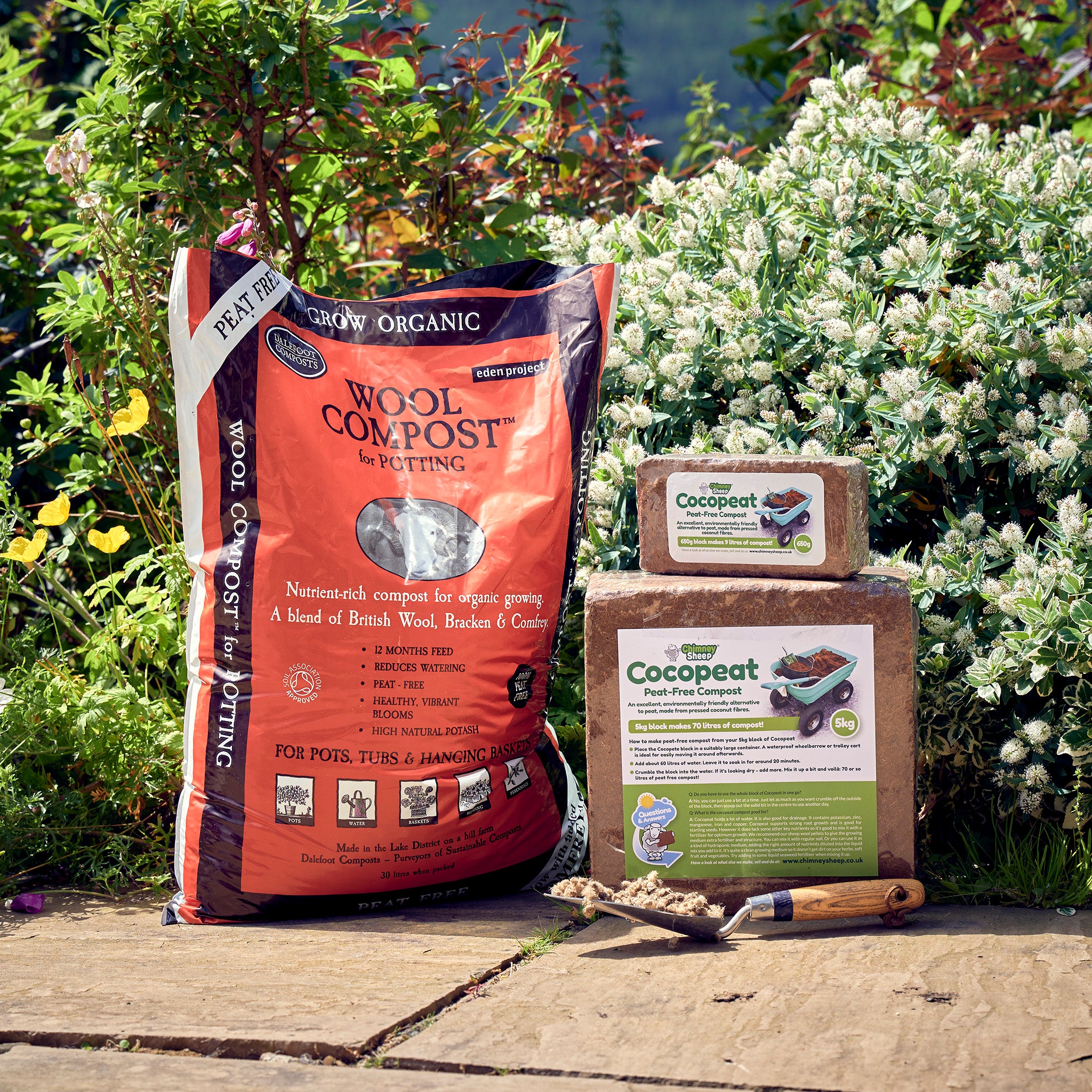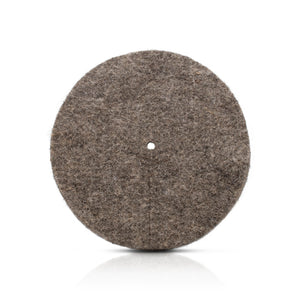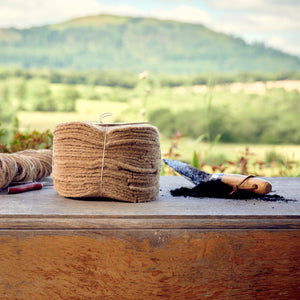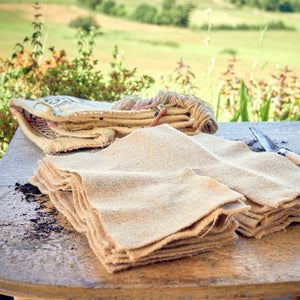Cocopeat peat free compost is made in Sri Lanka by a small coconut processing factory, which makes coconut fibre products. The Cocopeat is actually a by-product of the process, and as you know we hate waste at Chimney Sheep, even other companies’ waste, so if it can be useful that suits us just fine. It is an excellent environmentally friendly alternative to peat made from pressed coconut fibres. You are probably aware of how destructive peat is to the environment, but if you want to know more about it read here.
The coconut fibre compost is equally suitable for indoor plants, for use in the garden or as a compost improver. Cocopeat is not a fertilizer, it's more a growing medium. I usually add organic liquid seaweed fertiliser to mine to add some nutrition to plants.
Using the waste product creates additional jobs and funding for education.
How to make peat free compost from your 650g block of Cocopeat compost:
- Simply put the block (or blocks) in a suitable container and add about 6 litres of water per block.
- Leave to stand for 20 – 30 minutes, during which time it will expand to around 7 or 8 times its size.
- Crumble the Cocopeat and add a little more water as necessary.
How to make peat free compost from your 5kg block of Cocopeat compost:
- Place the block in a suitably large container. A waterproof wheelbarrow or trolley cart is ideal for easily moving it around afterwards.
- Add about 60 litres of water. Leave it to soak in for around 20 minutes.
- Crumble the block into the water. If it’s looking dry add more. Mix it up a bit and voilà: 70 or so litres of peat free compost!
Do you have to use the whole block of Cocopeat in one go?
No, you can just use a bit at a time. Have you ever started defrosting soup in a pan, then decided there's more in the pan than you need, and scooped out the remaining frozen lump to re-freeze for another day? Well you can do that with the Cocopeat block. Just let as much as you want crumble off the outside of the block, then scoop out the solid bit in the centre to use another day.
What is cocopeat compost made of?
Coconut trees are amazing! Every single bit of it is used in one way or another. The husk of the coconut is coir. The more stringy bits are used for mats, ropes, brushes, even caulking for boats. The less stringy bits weren’t much use until someone had the brainwave of compressing it into blocks which could be re-hydrated to make compost. It's composted enough to make it friable. Coir compost seems to vary quite a lot; I've seen some that is very coarse but this produces a nice fine potting compost.
What is wrong with using peat?
Peat is formed over thousands of years by partly decomposed wetland plants which are compacted at a rate of 1mm per year. If you can imagine how many tonnes are extracted at commercial sites, you will realise that it is impossible for peat bogs to replenish at anything near the rate at which they are being destroyed.
What’s so great about peat bogs?
Peat bogs provide unique habitats for species, and as the peat bogs dwindle the species become more threatened. In addition, peat bogs sequester carbon that has been laid down over millennia. Just as burning coal and oil releases carbon dioxide into the atmosphere, extracting peat and using it in gardens causes the carbon dioxide it has been storing to be released, contributing to global warming.
What is the cocopeat compost good for?
Cocopeat holds a lot of water. It is also good for drainage. It contains potassium, zinc, manganese, iron and copper. Cocopeat supports strong root growth and is good for starting seeds. However it does lack some other key nutrients so it’s good to mix it with a fertiliser for optimum growth. We recommend our sheep wool pellets to give the growing medium extra fertiliser and structure (well we would, wouldn’t we!). You can mix it with regular soil. Or you can use it as a kind of hydroponic medium, adding the right amount of nutrients diluted into the liquid mix you add to it. It’s quite a clean growing medium so it doesn’t get dirt on your herbs and vegetables. I usually add in some liquid seaweed fertiliser when I mix it up.
What is the pH of Cocopeat Compost?
Cocopeat compost is virtually neutral, ranging from just over 5 to just under 7, whereas peat extracted from precious peat bogs is slightly acidic. This makes the Cocopeat compost much more suitable for a wider range of plants, as well as being much more sustainable. You know not to buy peat compost, right? I mean, not even a small proportion of peat in the compost? I know I go on about it but peat extraction is so destructive.
Is Cocopeat peat free compost organic?
Cocopeat is a by-product of commercially-grown coconut so it can’t be labelled as organic. It contains mulch (>80%) organic matter; pH 4.7; Salt content: 644 mg / l; 9 litres Raw material: 100% coco fibres from the agricultural and forestry industries Nutrients: Nitrogen (N) 422 mg / l; Potassium oxide (K₂O) 797 mg / l
Please store the Cocopeat in a dry place
Cocopeat peat free compost is made in Sri Lanka by a small coconut processing factory, which makes coconut fibre products. The Cocopeat is actually a by-product of the process, and as you know we hate waste at Chimney Sheep, even other companies’ waste, so if it can be useful that suits us just fine. It is an excellent environmentally friendly alternative to peat made from pressed coconut fibres. You are probably aware of how destructive peat is to the environment, but if you want to know more about it read here.
The coconut fibre compost is equally suitable for indoor plants, for use in the garden or as a compost improver. Cocopeat is not a fertilizer, it's more a growing medium. I usually add organic liquid seaweed fertiliser to mine to add some nutrition to plants.
Using the waste product creates additional jobs and funding for education.
How to make peat free compost from your 650g block of Cocopeat compost:
- Simply put the block (or blocks) in a suitable container and add about 6 litres of water per block.
- Leave to stand for 20 – 30 minutes, during which time it will expand to around 7 or 8 times its size.
- Crumble the Cocopeat and add a little more water as necessary.
How to make peat free compost from your 5kg block of Cocopeat compost:
- Place the block in a suitably large container. A waterproof wheelbarrow or trolley cart is ideal for easily moving it around afterwards.
- Add about 60 litres of water. Leave it to soak in for around 20 minutes.
- Crumble the block into the water. If it’s looking dry add more. Mix it up a bit and voilà: 70 or so litres of peat free compost!
Do you have to use the whole block of Cocopeat in one go?
No, you can just use a bit at a time. Have you ever started defrosting soup in a pan, then decided there's more in the pan than you need, and scooped out the remaining frozen lump to re-freeze for another day? Well you can do that with the Cocopeat block. Just let as much as you want crumble off the outside of the block, then scoop out the solid bit in the centre to use another day.
What is cocopeat compost made of?
Coconut trees are amazing! Every single bit of it is used in one way or another. The husk of the coconut is coir. The more stringy bits are used for mats, ropes, brushes, even caulking for boats. The less stringy bits weren’t much use until someone had the brainwave of compressing it into blocks which could be re-hydrated to make compost. It's composted enough to make it friable. Coir compost seems to vary quite a lot; I've seen some that is very coarse but this produces a nice fine potting compost.
What is wrong with using peat?
Peat is formed over thousands of years by partly decomposed wetland plants which are compacted at a rate of 1mm per year. If you can imagine how many tonnes are extracted at commercial sites, you will realise that it is impossible for peat bogs to replenish at anything near the rate at which they are being destroyed.
What’s so great about peat bogs?
Peat bogs provide unique habitats for species, and as the peat bogs dwindle the species become more threatened. In addition, peat bogs sequester carbon that has been laid down over millennia. Just as burning coal and oil releases carbon dioxide into the atmosphere, extracting peat and using it in gardens causes the carbon dioxide it has been storing to be released, contributing to global warming.
What is the cocopeat compost good for?
Cocopeat holds a lot of water. It is also good for drainage. It contains potassium, zinc, manganese, iron and copper. Cocopeat supports strong root growth and is good for starting seeds. However it does lack some other key nutrients so it’s good to mix it with a fertiliser for optimum growth. We recommend our sheep wool pellets to give the growing medium extra fertiliser and structure (well we would, wouldn’t we!). You can mix it with regular soil. Or you can use it as a kind of hydroponic medium, adding the right amount of nutrients diluted into the liquid mix you add to it. It’s quite a clean growing medium so it doesn’t get dirt on your herbs and vegetables. I usually add in some liquid seaweed fertiliser when I mix it up.
What is the pH of Cocopeat Compost?
Cocopeat compost is virtually neutral, ranging from just over 5 to just under 7, whereas peat extracted from precious peat bogs is slightly acidic. This makes the Cocopeat compost much more suitable for a wider range of plants, as well as being much more sustainable. You know not to buy peat compost, right? I mean, not even a small proportion of peat in the compost? I know I go on about it but peat extraction is so destructive.
Is Cocopeat peat free compost organic?
Cocopeat is a by-product of commercially-grown coconut so it can’t be labelled as organic. It contains mulch (>80%) organic matter; pH 4.7; Salt content: 644 mg / l; 9 litres Raw material: 100% coco fibres from the agricultural and forestry industries Nutrients: Nitrogen (N) 422 mg / l; Potassium oxide (K₂O) 797 mg / l
Please store the Cocopeat in a dry place










